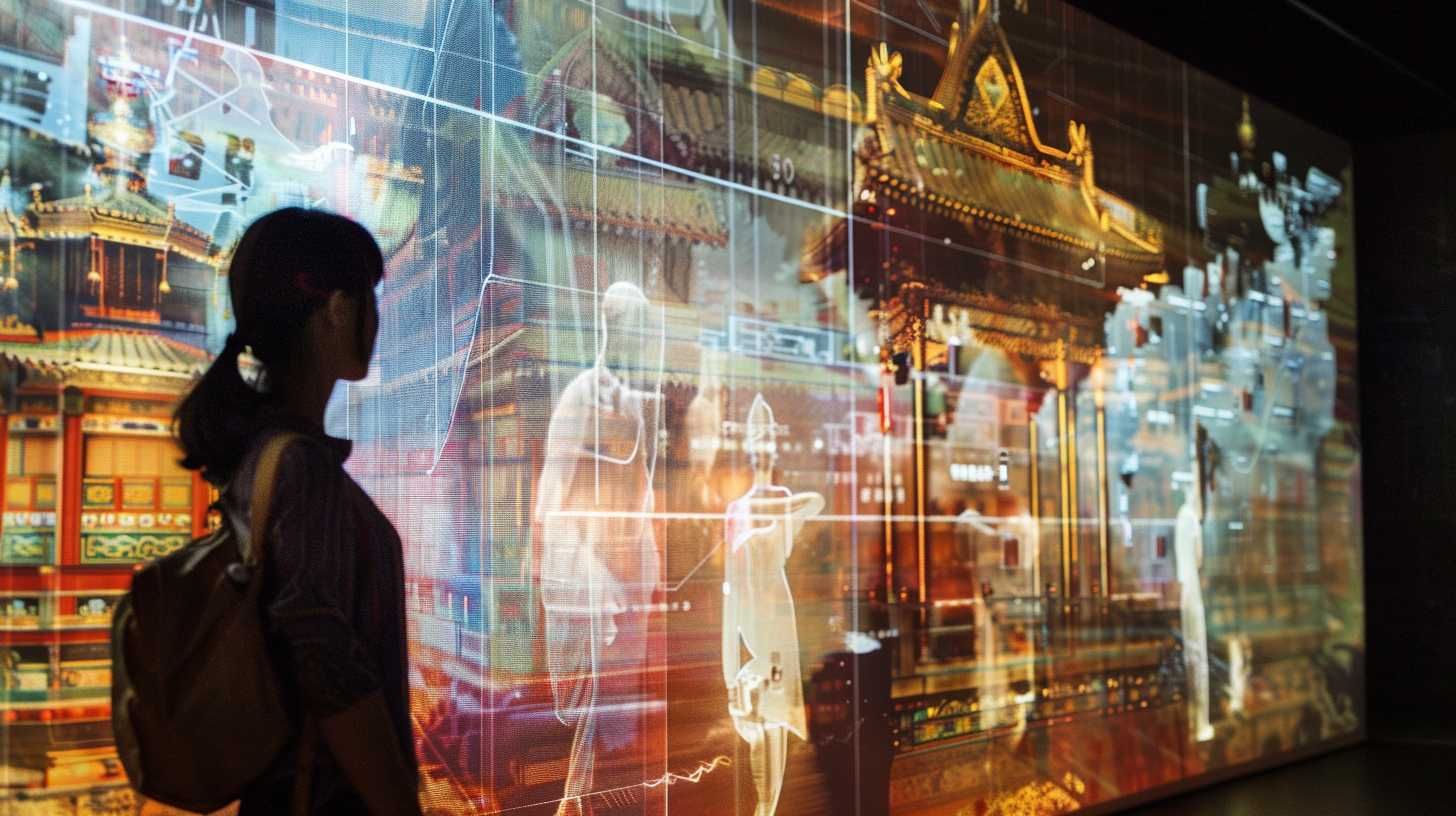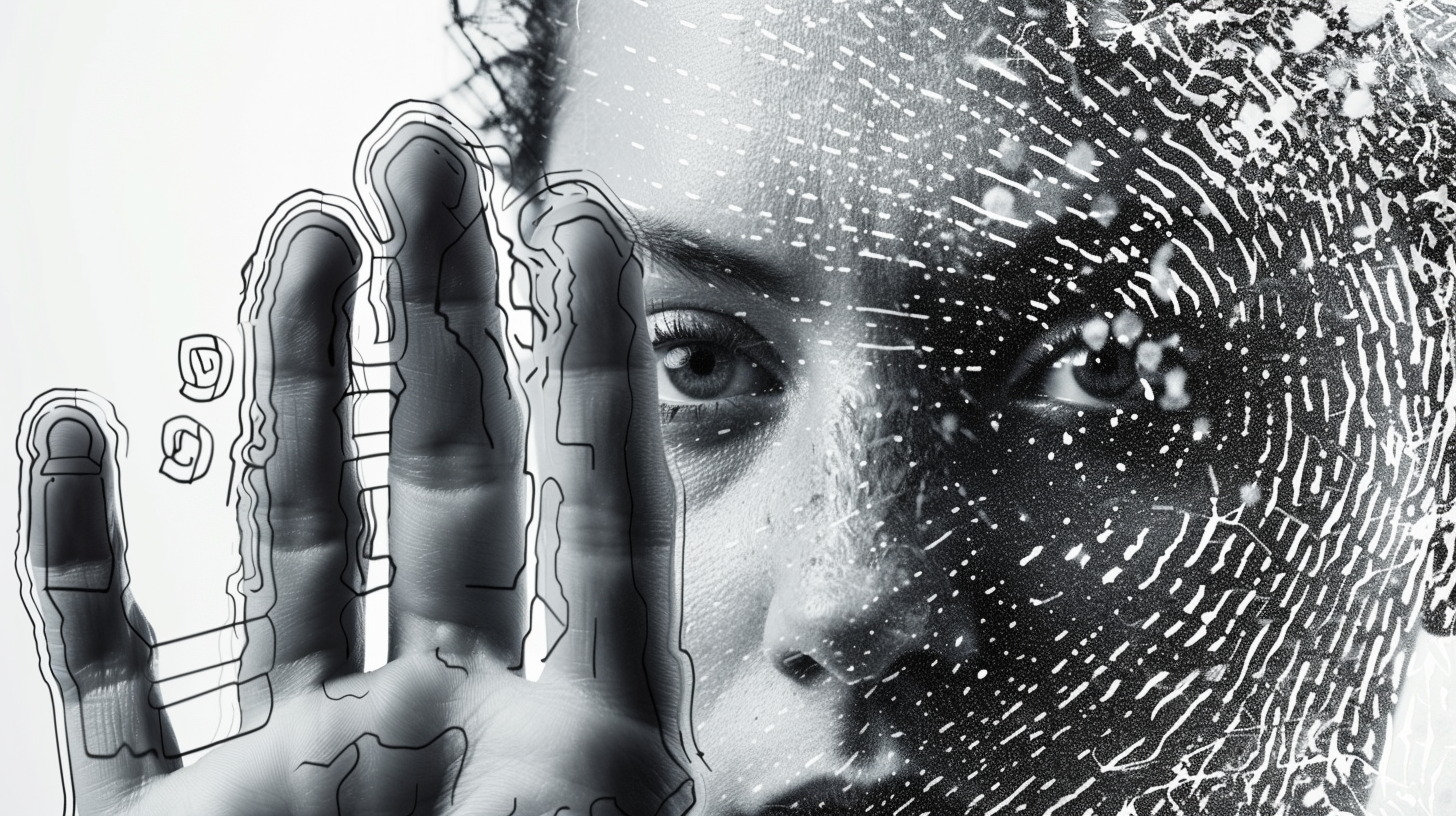Table of Contents Show
When we consider the meticulous 3D scanning of the Notre-Dame Cathedral before the devastating fire, it’s clear how digital technologies are revolutionizing the way we preserve cultural heritage. This example highlights not just a method of preservation but also a bridge between past and future, allowing us to safeguard and share our global heritage in ways previously unimaginable. Yet, as we stand on this digital frontier, questions about the authenticity, accessibility, and ethics of digital preservation remain unanswered. Let’s explore together how these technologies are shaping the future of cultural preservation and the debates they spark along the way.
Key Takeaways
- Digital archiving and AI enhance efficiency in preserving and accessing cultural heritage.
- Virtual reality and online platforms democratize access to cultural treasures globally.
- Community engagement and technology support the preservation of indigenous languages and traditions.
- Ethical consideration and sustainable practices are essential in digital cultural preservation efforts.
The Rise of Digital Archiving
The advent of digital archiving has revolutionized how we preserve and access historical records and cultural artifacts. We’re no longer confined by the physical limitations of paper, tape, or stone. Instead, we’ve embraced the freedom that comes with digitizing these precious materials. This transformation allows us to safeguard our global heritage against the ravages of time, environmental threats, and unforeseen disasters.
We’ve witnessed firsthand how digital archives have democratized access to knowledge. People around the world can now explore vast collections of documents, artworks, and historical texts with just a few clicks. It’s as if we’ve reveal a treasure trove of human history, making it available to anyone with an internet connection. This accessibility is not just about convenience; it’s a radical shift towards empowering individuals with information that was once guarded within the walls of elite institutions.
In addition, we’re not just passive observers in this digital era. Communities are actively participating in the preservation of their own histories. Through crowdsourcing projects, individuals contribute by scanning personal photographs, documents, and stories, weaving a rich tapestry of human experience that’s more diverse and inclusive than ever before.
Digital archiving isn’t just about storing data; it’s about ensuring that future generations can understand their past with clarity and depth. By embracing this technology, we’re not just protecting artifacts; we’re preserving the essence of our cultures and identities for posterity. It’s a proof to our commitment to freedom, ensuring that the knowledge and beauty of our world remain accessible to all, uninhibited by the physical and geographical barriers that once limited us.
3D Scanning and Reconstruction
Among the most transformative technologies in cultural preservation, 3D scanning and reconstruction offer unparalleled opportunities to capture and recreate physical artifacts in digital form. This method not only guarantees the longevity of cultural heritage but also democratizes access, allowing people worldwide to explore treasures they might otherwise never see. We’re diving into how this technology empowers us to safeguard our past, presenting it in a way that resonates with those who value freedom and accessibility.
Here are three key ways 3D scanning and reconstruction revolutionize cultural preservation:
-
Accuracy and Detail: We can capture every minute detail of an artifact, no matter how intricate. This precision allows us to create digital replicas that are as close as possible to the original, preserving its essence for future generations.
-
Damage-Free Documentation: Traditional methods of preservation can be intrusive, sometimes risking damage to precious artifacts. With 3D scanning, we document and preserve without ever touching the object, ensuring its safety while still sharing its story.
-
Global Accessibility: By digitizing artifacts, we’re breaking down physical and geographical barriers. Anyone with internet access can explore detailed replicas of artifacts from anywhere in the world, at any time. This freedom to explore and learn, unhindered by location or financial constraints, is a powerful step towards global cultural understanding.
We’re passionate about harnessing these technologies to keep our shared history alive in the digital age. Through 3D scanning and reconstruction, we’re not just preserving the past; we’re guaranteeing its freedom to inspire and educate future generations, everywhere.
Virtual Reality Tours
Virtual Reality Tours offer an immersive exploration into cultural heritage, letting us walk through history from the comfort of our homes. It’s an exciting leap from static images or texts, giving us the freedom to dive deep into the past without the constraints of physical or geographical limitations. We can stand amidst ancient ruins, explore the intricate details of historical monuments, and experience the ambience of historical events, all through a VR headset. This technology doesn’t just preserve culture; it revitalizes it, making history accessible and engaging for everyone.
We’re not just passive observers in this digital era; we’re active participants. VR tours empower us to choose our path, investigate our interests, and interact with the past in a way that books or traditional media never could. Imagine standing in the center of a historical battle, walking the halls of a long-lost palace, or experiencing the creation of iconic artworks. Virtual Reality brings these scenarios to life, offering us a profound understanding of our heritage.
These tours are a vital to how technology can democratize access to culture. Regardless of one’s physical abilities, location, or socioeconomic status, we all have the opportunity to explore and learn. It’s about breaking barriers and ensuring that our global cultural heritage is preserved, appreciated, and understood.
In embracing VR tours, we’re not just witnessing history; we’re immersing ourselves in it. We’re experiencing the freedom to explore the past in a way that’s interactive, engaging, and profoundly educational. It’s a step towards ensuring that our rich cultural tapestry is not only remembered but experienced by generations to come.
Online Exhibitions and Galleries
Online exhibitions and galleries usher us into the digital halls of art and history, making cultural treasures accessible from anywhere in the world. This incredible leap in cultural preservation and access embodies the spirit of liberty, allowing us to explore, learn, and be inspired without the constraints of physical location or the limits of traditional opening hours.
To fully embrace and enjoy this newfound freedom, here are three tips:
-
Plunge Deep with Interactive Features: Many online exhibitions offer interactive elements such as zoomable images and clickable information points. Don’t just skim the surface; take the time to engage deeply with these features. They’re designed to enhance your understanding and appreciation of the artworks or artifacts on display.
-
Explore Broadly but Immerse Deeply: The vastness of what’s available might seem overwhelming, but it’s also an invitation to curiosity. Start with exhibitions related to your interests, then let your discoveries guide you to new, unexpected paths. The freedom to explore at your own pace and direction is one of the greatest gifts of online galleries.
-
Participate in Virtual Events and Discussions: Many institutions host live events, virtual tours, and discussion forums around their online exhibitions. Participating in these can enrich your experience, connect you with like-minded individuals, and provide insights you might not have gained on your own.
We’re witnessing a revolution in how we access and interact with cultural heritage. Through online exhibitions and galleries, we’re not just observing; we’re actively participating in the preservation and appreciation of global culture, all from the comfort of our own spaces.
Digital Storytelling Techniques
Building on our exploration of online exhibitions, we now turn our focus to the art of digital storytelling techniques that bring cultural narratives to life. We’re diving into innovative ways to share our stories, breaking free from traditional constraints and embracing the digital age with open arms. It’s about making our heritage accessible and engaging for everyone, everywhere.
We’re leveraging multimedia tools to craft stories that resonate deeply. Imagine blending historical photos, videos, voiceovers, and music to create immersive experiences. We’re not just telling stories; we’re inviting our audience to step into them, to feel the texture of our cultures and the pulse of our histories. It’s a powerful way to safeguard and share our legacy, making sure it’s not just remembered but felt.
Interactive storytelling is also on our radar. We’re experimenting with platforms that allow viewers to choose their path through our narratives, making each journey personal and unique. This approach not only captivates but also empowers our audience, giving them the freedom to explore our cultural landscapes in their own way.
At the heart of our efforts is a commitment to authenticity. We’re collaborating with communities to make sure their stories are told with respect and accuracy. It’s about lifting voices that have been overlooked and bringing diverse perspectives to the forefront.
As we continue to innovate, we’re not just preserving our past; we’re reimagining how it’s shared. We’re breaking barriers and building bridges, making sure that our cultural stories are not only preserved but thrive in the digital era.
Social Media’s Role
We’re now turning our attention to social media’s pivotal role in the digital transformation of cultural preservation. Through platforms like Instagram and Twitter, we can amplify heritage voices and guarantee their stories reach a global audience. Additionally, these networks serve as invaluable archives for cultural content, preserving it for future generations.
Amplifying Heritage Voices
Harnessing the power of social media, we’re amplifying the voices of cultural heritage communities to reach a global audience. Our mission is to make sure that these invaluable voices, often overshadowed by mainstream narratives, find their rightful place in the global dialogue. By leveraging platforms like Twitter, Instagram, and Facebook, we’re not just preserving culture; we’re making it accessible and engaging for everyone, everywhere.
Here’s how we’re doing it:
- Showcasing Diverse Stories: We spotlight unique cultural practices and stories, celebrating diversity.
- Engaging Communities: We encourage active participation and dialogue among global audiences.
- Empowering Local Voices: We provide tools and platforms for local heritage keepers to share their narratives directly.
Together, we’re breaking barriers and fostering a world that cherishes and protects its cultural diversity.
Archiving Cultural Content
In the digital age, social media has become a vital tool for archiving cultural content, allowing us to preserve and share our heritage with the world. Platforms like Instagram, Twitter, and Facebook empower us to document and disseminate our cultural practices, languages, and traditions in real-time. They’re not just about connecting us; they serve as living archives where every post, tweet, or story contributes to a global tapestry of human culture. We’re no longer reliant on traditional methods that often exclude the marginalized. Instead, we’ve got the power to curate and share our stories, ensuring they’re seen, heard, and remembered. This democratization of cultural preservation marks a significant shift towards a more inclusive and accessible way to safeguard our collective history.
Preserving Indigenous Languages
Turning our focus to preserving indigenous languages, we’re seeing how technology plays a pivotal role in their revival. Digital archives offer a haven for dialects at risk of disappearing, while apps introduce a dynamic way for people to learn and engage with these languages. It’s an exciting time as we explore these digital avenues to keep linguistic diversity alive.
Technology in Language Revival
We’re leveraging modern technology to breathe new life into the preservation of indigenous languages. By embracing the digital age, we’re not just safeguarding these languages; we’re giving them a platform to flourish. Here’s how we’re doing it:
- Mobile Apps: Tailored apps make learning interactive and accessible, breaking down barriers to language education.
- Social Media: Platforms encourage real-time practice and community support, connecting speakers worldwide.
- Thorough Courses: Thorough courses offer structured learning from anywhere, anytime.
This approach empowers individuals to learn at their own pace, ensuring that these precious languages aren’t just preserved but are actively used and celebrated. We’re not just looking back; we’re moving forward, ensuring freedom and accessibility in the way we connect with our cultural heritage.
Digital Archives for Dialects
Digital archives for dialects offer a groundbreaking approach to preserving indigenous languages by securely storing and making them accessible worldwide. We’re breaking down barriers, guaranteeing these crucial pieces of cultural heritage aren’t lost to time. It’s not just about storage; it’s about freedom—the freedom to access, learn, and share the rich tapestry of human linguistic diversity from anywhere in the world. We’re empowering communities to safeguard their own voices, to make sure their stories and wisdom are passed on. This isn’t just preservation; it’s a declaration of the value of every language, of every voice. By harnessing digital technology, we’re creating a global platform where indigenous dialects gain the recognition they deserve, ensuring they thrive for generations to come.
Apps for Learning Languages
In today’s digital era, apps dedicated to learning languages are playing a pivotal role in preserving indigenous languages, offering users worldwide the chance to immerse themselves in the richness of these cultures. By leveraging these apps, we’re not just discovering new words; we’re embracing the freedom to connect with cultures on the brink of being forgotten. Here’s how we can enjoy this journey:
- Explore at Your Own Pace: There’s no hurry. Immerse yourself in lessons when it suits you, making learning a joy, not a chore.
- Engage with Native Speakers: Many apps offer interaction with natives, bringing authentic experiences directly to your screen.
- Share Your Progress: Celebrate your milestones and inspire others to start their own language learning adventure.
Together, we’re opening the doors to invaluable cultural treasures, one click at a time.
Enhancing Accessibility Through Technology
Technology’s role in making cultural treasures accessible to a global audience cannot be overstated. We’re witnessing a revolution where digital tools are breaking down barriers that have long kept significant cultural artifacts out of reach for many. It’s not just about viewing a digital image of an ancient manuscript or a legendary painting anymore; it’s about experiencing these wonders in immersive ways that were once unimaginable.
Virtual reality (VR) tours, for instance, allow us to wander through historical sites and museums from the comfort of our homes. We’re no longer bound by geography or physical limitations. These experiences bring us closer to understanding the essence of cultures far removed from our own, fostering a sense of global community and shared heritage.
Moreover, digital archives have become indispensable in our quest to safeguard cultural knowledge. They offer an abundance of resources at our fingertips, ensuring that valuable historical documents, artworks, and oral traditions are preserved for future generations. It’s empowering to know that we can contribute to and access this collective memory with just a few clicks.
Most importantly, these technologies democratize access to culture. They tear down the elitist walls that have historically made cultural appreciation a privilege for the few. Now, anyone with an internet connection has the world’s history and artistry at their disposal. It’s a sign of how far we’ve come in ensuring that the freedom to explore and appreciate our diverse cultural landscape is a right, not a luxury.
As we continue to push boundaries and innovate, we’re committed to making cultural preservation an inclusive, accessible, and enriching experience for all.
Artificial Intelligence in Artifact Analysis
We’re now turning our attention to how artificial intelligence is revolutionizing artifact analysis. By employing AI-driven recognition, we’re enhancing historical accuracy and uncovering details that were previously overlooked. Additionally, predictive conservation techniques are paving the way for proactive preservation of cultural heritage.
AI-Driven Artifact Recognition
AI-driven artifact recognition is revolutionizing how we analyze and understand historical artifacts. This transformative approach is not just about identifying objects faster; it’s about unleashing a new domain of freedom in historical exploration. Here’s why you’ll love it:
- Efficiency: We’re cutting down on hours of manual cataloging, making more time for in-depth research and discovery.
- Accessibility: It’s opening up the world of ancient artifacts to everyone, breaking down barriers that have kept these treasures locked in vaults.
- Innovation: New findings are now within reach, thanks to the ability to quickly sift through vast amounts of data, revealing connections we’ve never seen before.
This isn’t just about technology; it’s about setting history free, allowing us to explore our past with fresh eyes and unbounded curiosity.
Enhancing Historical Accuracy
Building on the momentum of AI-driven artifact recognition, we now turn our focus to how artificial intelligence enhances historical accuracy in artifact analysis. By harnessing the power of AI, we’re not just preserving history; we’re ensuring it tells the truest version of its tale. Here’s how:
| AI Feature | Benefit | Impact on Historical Accuracy |
|---|---|---|
| Pattern Recognition | Identifies intricate details | Reveals overlooked aspects |
| Data Cross-Referencing | Compares vast data sets | Confirms or challenges narratives |
| Language Processing | Deciphers ancient texts | Provides accurate translations |
| Predictive Analytics | Anticipates degradation paths | Prevents loss of crucial information |
We’re leveraging AI to break free from the constraints of traditional methodologies, offering a fresh perspective on history that’s as accurate as it is accessible.
Predictive Conservation Techniques
Harnessing the power of artificial intelligence, we’re now implementing predictive conservation techniques to proactively safeguard artifacts against future degradation. This innovative approach allows us to predict and prevent damage before it occurs, ensuring the longevity of cultural treasures. Here’s how we’re making it happen:
- Data Analysis: We’re analyzing vast datasets to identify patterns of deterioration, enabling targeted preservation efforts.
- Environmental Monitoring: AI tools predict how changes in humidity, temperature, and light could affect artifacts, allowing us to adjust conservation strategies accordingly.
- Material Forecasting: By predicting how materials will age over time, we can apply the most effective conservation treatments today.
This proactive stance on preservation grants us the freedom to secure our cultural heritage for generations to come, without the constraints of reacting to damage that has already occurred.
Digital Conservation Ethics
Why should we consider ethical guidelines paramount when digitally conserving cultural artifacts? In our journey to preserve cultural heritage through digital means, we’re maneuvering a delicate balance between innovation and respect. We’re tasked with ensuring that our methods don’t inadvertently strip away the essence of what we’re trying to save.
We believe in the freedom to access and share cultural knowledge, but this comes with the responsibility to do so respectfully and thoughtfully. Digital conservation offers unparalleled opportunities to democratize access to cultural artifacts that were once confined to physical locations. However, without a strong ethical framework, we risk misrepresenting or appropriating these treasures in ways that could harm the very communities they originate from.
Our commitment to ethical digital conservation means prioritizing the voices and perspectives of those who are custodians of their culture. It’s not just about preserving the artifact itself but also the context that gives it meaning. We’re talking about a respectful collaboration that acknowledges and safeguards the intangible heritage—traditions, languages, and knowledge—that accompany these artifacts.
Furthermore, we’re aware of the digital divide and its implications on cultural preservation. Ensuring equitable access to digital replicas of cultural artifacts means we’re not just preserving for the privileged few but for everyone, regardless of geographic or economic barriers.
Collaborative Platforms for Cultural Heritage
In the digital age, we’re leveraging collaborative platforms to revolutionize the way we preserve and share cultural heritage. These platforms aren’t just storing data; they’re creating a dynamic space for interaction, knowledge exchange, and community involvement. By harnessing the power of the internet, we’re breaking down barriers that once made cultural preservation an exclusive domain of experts. Now, anyone with a passion for culture can participate, contribute, and learn.
Here’s how we’re making it happen:
-
Crowdsourcing for Information Gathering: We’re inviting people from all corners of the globe to contribute their knowledge and artifacts to our digital repositories. This collective effort not only enriches our cultural databases but also ensures a more diverse and inclusive representation of global cultures.
-
Interactive Learning Platforms: We’re developing tools that allow users to not just view but interact with cultural artifacts. Imagine exploring a virtual reconstruction of an ancient site or learning a traditional craft through augmented reality. These experiences make cultural education more engaging and accessible.
-
Open-Source Repositories for Cultural Data: We’re advocating for the open sharing of cultural data, believing that freedom of information is pivotal for educational and cultural development. By making our digital archives freely available, we’re empowering researchers, educators, and the public to explore, interpret, and create new cultural narratives.
We’re convinced that collaborative platforms are key to democratizing cultural preservation. By inviting everyone to take part, we’re ensuring that our global cultural heritage is not just preserved but also celebrated, understood, and continuously enriched.
Future Trends in Digital Preservation
Looking toward the future, we’re witnessing an exciting evolution in the methods and technologies used for digital preservation. The digital domain offers us unparalleled freedom to explore, share, and protect our cultural heritage in ways we’ve only begun to imagine. We’re on the cusp of harnessing groundbreaking advancements that promise not just to safeguard our past but to make it vibrant and accessible in unimaginable ways.
| Trend | Impact |
|---|---|
| AI and Machine Learning | AI’s ability to analyze and categorize vast amounts of data will revolutionize how we manage digital archives, making them more accessible and interactive. |
| Blockchain for Authenticity | Blockchain technology will assure the integrity of digital artifacts, providing a secure, unalterable record of their history and provenance. |
| Immersive Virtual Reality | VR will allow us to experience cultural heritage in three dimensions, offering a fully immersive exploration of historical sites and artifacts from anywhere in the world. |
| Crowdsourced Preservation | Digital platforms will enable global communities to contribute to the preservation of cultural heritage, democratizing the process and enhancing the diversity of preserved content. |
| Sustainable Digital Practices | As we move forward, there’ll be a stronger emphasis on eco-friendly digital preservation, assuring that our efforts to protect the past don’t come at the expense of our planet’s future. |
Embracing these trends, we’re not just preserving history; we’re assuring it remains a living, breathing part of our collective consciousness. Together, let’s venture into this boundless digital landscape, where every byte of data holds the promise of eternal preservation and unfettered exploration.
Conclusion
We’ve navigated the labyrinth of digital cultural preservation, from the intricate web of digital archiving to the immersive magic of virtual reality tours. Like explorers charting unknown territories, we’ve witnessed how artificial intelligence breathes new life into ancient artifacts. Our journey underscores the crucial role of digital techniques in keeping our heritage alive. As we look to the future, we’re excited about the possibilities that lie ahead, ensuring our cultural treasures are preserved for generations to come.








